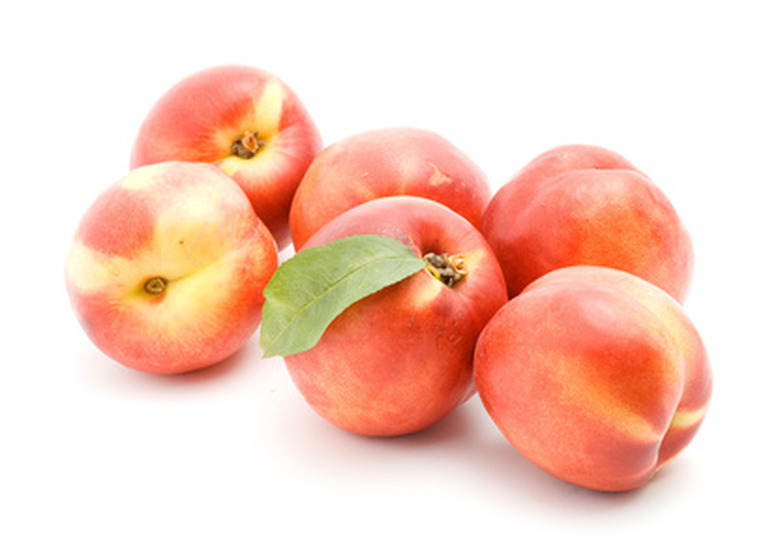How To Care For A Donut Peach Tree
Things Needed
- Pruning shears
- High phosphorus fertilizer
- 10-10-10 fertilizer
- Mulch
- Copper fungicide spray
The so-called donut peach tree is a freestone heirloom variety with unusual flattened fruit. The tree grows as tall as 20 feet and produces fruit with a mild, yet sweet flavor. It tolerates below-zero temperatures and is appropriate for gardens in USDA climate zones 5 through 8. When you plant your tree, make sure the area receives full sun and has well-draining, mostly sandy soil. Also ensure that the mature tree will have an area at least 20 to 25 feet from other trees or buildings.
Step 1
Prune bare root trees to an open center before you plant. This involves cutting the main central trunk to within 3 feet of ground level and pruning off all but two or three of the side branches to the trunk.
- The so-called donut peach tree is a freestone heirloom variety with unusual flattened fruit.
- This involves cutting the main central trunk to within 3 feet of ground level and pruning off all but two or three of the side branches to the trunk.
Step 2
Fertilize newly planted trees with a plant food that is high in phosphorus to encourage strong roots. Phosphorus is indicated on fertilizer packages as the second number in the N-P-K reading. For example, a plant food having an N-P-K ratio of 10-20-10 is high in phosphorus. Follow label instructions for correct mixing and application. Fertilize mature trees in March and May, using about 1 lb. of a plant food with an N-P-K ratio of 10-10-10.
Step 3
Water your peach tree by flooding the root zone once or twice each week during its active summer growing season. You can help keep the soil moist if you spread a thick, 3-inch layer of mulch around the trunk. Mulch made from tree bark is recommended.
- Fertilize newly planted trees with a plant food that is high in phosphorus to encourage strong roots.
- of a plant food with an N-P-K ratio of 10-10-10.
Step 4
Spray your donut peach tree during its winter dormant period in January and February with a copper fungicide to keep it safe from the disease called peach leaf curl.
Step 5
Thin forming peaches about one month after your tree flowers to encourage better, large fruit and to prevent branches from breaking under the weight of too many peaches.
Step 6
Harvest your donut peaches when they feel slightly soft: in most regions, donut peaches ripen in July. They will also have a reddish-orange color and reach about 3 inches in width.
